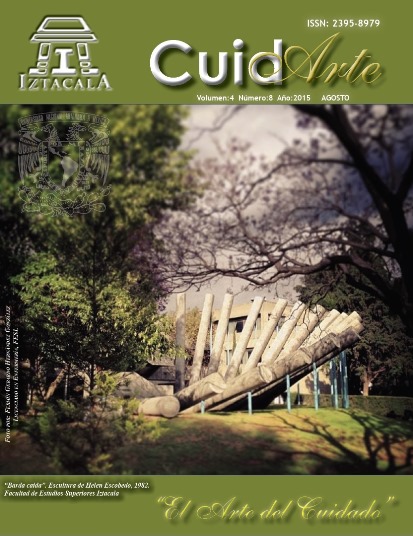Association between the use of technological means and some sleep disorders
Main Article Content
Abstract
In Mexico there are sleep disorders by altering
the circadian rhythm regulated by diverse nervous,
and these centers are influenced by psychological,
hormonal factors and sleep habits; these can
compromise academic performance, cause accidents,
disturbances of affect and social performance.
Nowadays in Mexico and in the rest of the world it is
lived surrounded with technology and in the young
adults its use appears more. The objetive of this
research is to determine the association between
the use of technological means and the presence
of drowsiness, insomnia and alteration in the sleep
quality in the students of the Facultad de Estudios
Superiores Iztacala. Method: Epidemiologic study,
of quantitative, prospective, transverse, analytical
approach. It was realized with students between the
18 to 25 years. Four instruments were applied to
evaluate the use of technological means, insomnia,
drowsiness and sleep quality. Results: The insomnia
and alteration in the sleep quality isn’t associated
with the exhibition to use of technological means,
nevertheless the drowsiness is associated with
this exhibition factor, the female sex has major
predisposition to present drowsiness compared to
the male sex.
Conclusion: There is statistically significant
association between the drowsiness with the use of
technological means, nevertheless there exist other
factors that influence the result, and it is necessary
to explore it in future investigations.
Downloads
Article Details
Citas en Dimensions Service
References
(1) Chokroverty S (2011). Medicina de los trastornos del sueño: aspectos básicos, consideraciones técnicas y aplicaciones clínicas. 3ª ed. España: Elsevier.
(2) Saper C.B, Scammell T.E y Lu J. (2005) Hypothalamic regulation of sleep and circadian rhythms. Nature Medicine. Vol. 437(7063):1257-63.
(3) García V.E. (2011). Acerca del género y la salud. Papeles del Psicólogo. Vol. 32(3):282-288.
(4) Stevens RG y Yong Zhu (2014). Electric light, particularly at night, disrupts human circadian rhythmicity: is that a problem?. Biological Sciences. Vol. 370(1667):1-9.
(5) Pármenidez GO y Ricardo RA (2014). Controladores del tiempo y el envejecimiento: núcleo Supraquiasmático y glándula pineal. Int. J. Morphol. Vol. 32(2):409-414.
(6) Veldi M, Aluoja A y Vasar V (2005) Sleep quality and more common sleep-related problems in medical students. Sleep Med. (6):269-275
(7) García de León M y Robles J (2001). Encuesta epidemiológica sobre el sueño en la población juvenil. Vigilia- Sueño. Vol. 13(1):15-21.
(8) Instituto Nacional de Estadística y Geografía; [Página principal de Internet], México; “Estadística del día Mundial del Internet”. Consultado: 21-marzo-2015. Disponible:http://www.inegi.org.mx/inegi/contenidos/espanol/prensa/Contenidos/estadisticas/2013/internet0.pdf
(9) Ingrid N, Tinnesand L y Straume S (2014). The Association between use electronic media in bed before going to sleep and insomnia symptoms, daytime sleepiness, morningness, and chronotype. Behav Sleep Med. Vol. 12(5):346-57.
(10) Sierra C, Jiménez N y Martín O (2002). Calidad del sueño en estudiantes universitarios: importancia de la higiene del sueño. Salud Mental. Vol. 25(6):35-43.
(11) Matud MP y Marrero RJ. (2012) Psicología Diferencial. 1era ed. Madrid: Biblioteca Nueva.

